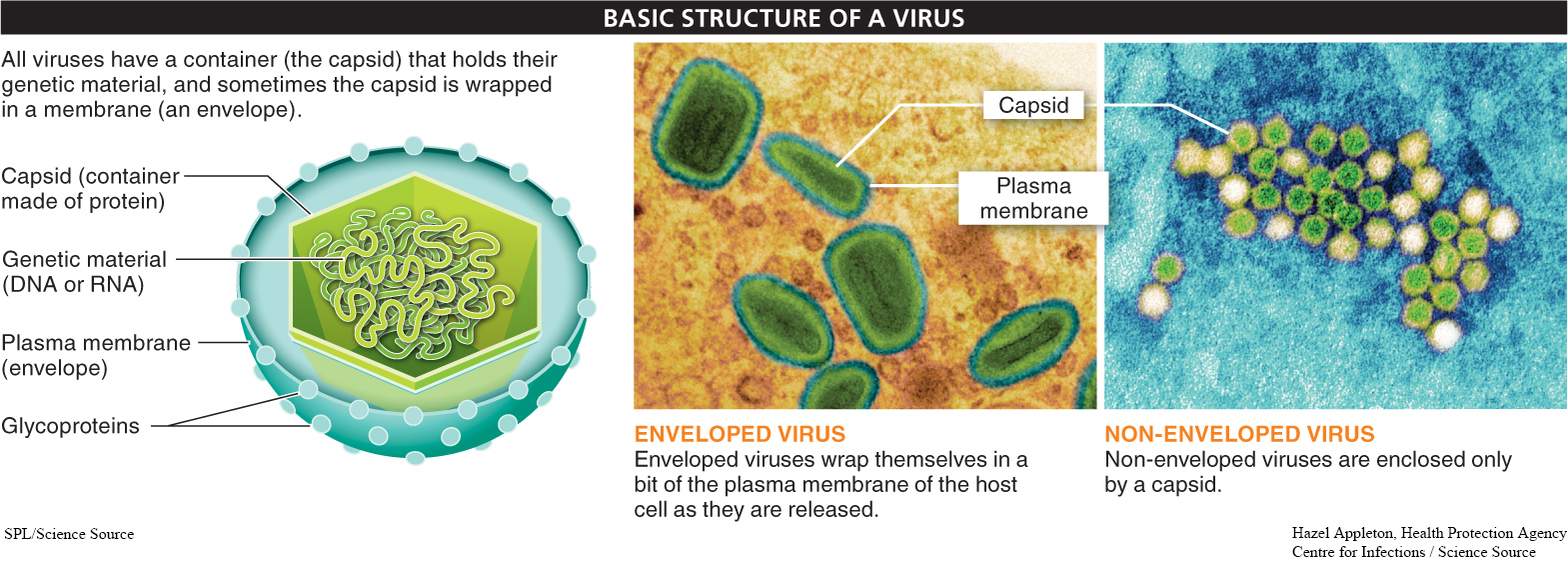
A virus is not a cell, and that is why viruses do not fit into any of the three domains of life. A virus particle (called a virion) consists of genetic material inside a container made of protein. Some viruses also contain a few enzymes. That’s all there is to a virus. The protein container is called the capsid, and the genetic material can be either DNA or RNA. Some viruses wrap themselves in a bit of the plasma membrane of the host cell as they are released. A virus of this type is called an enveloped virus—

There is almost nothing inside the capsid of a virus except DNA or RNA. A virus particle does not carry out any metabolic processes, and it does not control the inward or outward movement of molecules to make conditions inside the virus particle different from conditions outside. Viruses just wait for a chance to insert their genetic material into a living cell.
558
We speak of “catching” a cold, but what actually happens is that a virus catches us. Viruses identify the cells that they can infect by recognizing the structure of glycoprotein molecules on the surfaces of cells. Every cell in your body has these molecules. They are embedded in the plasma membrane and extend outward from the cell. Your immune system uses these proteins to identify the cells as part of you, and it does not react to proteins that it recognizes as self rather than non-
Viruses have cracked the glycoprotein code, and when they find a cell with the appropriate glycoprotein on its surface, they bind to that cell’s plasma membrane and insert their genetic material into the cell (FIGURE 13-25). Inside the host cell, the viral DNA or RNA takes over the cellular machinery and uses it to produce more viruses. Viruses carry out nearly all of their activities by hijacking materials and organelles in the host cell. Viral proteins are synthesized in exactly the same way as host cell proteins—

There are also some other types of non-
TAKE-HOME MESSAGE 13.16
A virus is not alive, but it can carry out some of the same functions as living organisms, provided that it can get inside a cell. A virus takes over the protein-
The simplest virus is made of what two components?
The simplest viruses consist of a protein coat, called a capsid, surrounding the virus’ genetic material, either DNA or RNA.
559